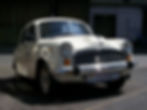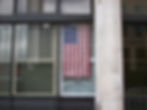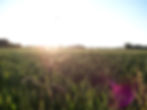Kodak C613 - revisiting my old Compact Digital
- Johnny Wilson
- Jul 18, 2019
- 9 min read
Updated: Feb 6
When I was 18 years old I picked up my first ever camera, a compact Fujifilm Finepix which I have blogged about before in my first ever blog post. Way back then in 2005 it was a competitively priced entry level digital camera and having digital photos you could download to your computer in an instant was still a relatively new thing for the consumer market. But the tech world moves very quickly, with at-the-time electronic giants like Kodak and Fuji pushing the boundaries to make better, more powerful cameras cheaper each and every time they came to the market. After 2 years, by 2007, my little humble 3.1 megapixel Finepix was looking severely outdated. So for my 20th birthday I went out and bought my second compact digital camera: a Kodak Easyshare C613.

My little Easyshare was a powerful thing for it's time (and it's price!) rocking a 6 megapixel sensor, a 3x optical zoom and nice big LCD on the back to better see what I was taking a photo of. Much better than the postage stamp sized one on my old Finepix! I remember finding it really easy to get to grips with and it quickly became my favorite camera. After getting more familiar with it, tweaking and playing with the settings, I could get some really nice photos with it. But as I moved more into shooting film (and after trying to make a disastrous and failed transition to a Nikon Coolpix...) I put it away on the shelf and never really bothered with it again. It's 10 years later in present day and amongst my camera collection is a 20.1 megapixel Canon Powershot G7X Mark II and an 18 megapixel Canon EOS 700D... Hardly comparable to the C613 admittedly, but given that Canons entry level IXUS compact also supports a 20 megapixel sensor, it's fair to say that the rapid advancement of technology has left my poor Easyshare behind! But in the modern day world of digital photography where everything is measured by megapixels, how does the now humble C613 measure up? I thought it would be cool to revisit the camera I cut my teeth on as a photographer and I carried it out around for a few weeks as I travelled between Birmingham and Leamington Spa testing it's features and recording some video.




It's over 10 years old, but the C613 still takes a really nice picture in my opinion! It's a small little camera that fits nicely in your pocket and is light enough to be unintrusive. It's not going to weigh you down whether it's in your bag or wrapped round your wrist and the camera body is molded to offer a nice and comfortable grip. The muscle memory, from using it so much when I was younger, came back to me almost immediately and I was instantly familiar and comfortable with it again. It was a nice feeling, to be shooting with it again.
Some quick tech specs for you: The C613 has a 6.1 megapixel sensor that records images at a maximum resolution of 2848 x 2134 pixels in a 4:3 aspect ratio with an f2.7 - f4.8 / 36mm - 108mm 35mm equivalent lens representing a 3x optical zoom. Shutter speeds range from 1/2 to 1/4000, ISO ranges from 80 to 1250 and can be manually set at 1 stop increments from 80 to 1250). Video can be recorded at VGA (640 x 480 at 15 fps) or QVGA (320 x 240 at 30 fps) in .mov format. The camera has four shooting modes: full auto, digital image stabilization, "SCN" and video. I tend to find that on full auto mode, leaving the ISO set to auto, that the camera tends to overexpose, so I almost always dial down the exposure compensation by 0.5 or 1.0 stops to reduce that slightly. Check out these two examples below, top is full auto, bottom is set to 0.5 exposure comp:


However one thing quite annoying about the C613, and early digital cameras in general, is that it doesn't remember your settings when you turn it off, so when turning the camera on, I almost always immediately switch the flash off (by default it's set to auto) and dial the exposure compensation down to 0.5 before composing my shot in the viewfinder and then making any further adjustments. The zoom on the lens is quite admirable, as aforementioned offering a 35mm equivalent of 36mm - 108mm, it's reasonable enough at both ends to cover a wide range of shooting scenarios. To give you an example of it's range, top shot was shot at maximum wide angle and bottom shot at maximum telephoto, defined on the camera as a slider between W and T:


Just don't go into the yellow zone between T and D as that is 'digital zoom' which basically crops and zooms in on the middle of the photo in camera and broadbrushly speaking is terrible. Even more so on low res digital compacts. Don't go there. Speaking of in camera, the C613 also has quite a variety of in camera toys you can play with. For a start you can crop any photo in camera, or apply what Kodak call "Perfect Touch Tech" to enhance your photos. Again, by way of a comparison; top is the original photo, bottom is after Perfect Touch Tech has been applied:


Although it worked out ok here (after application it looks a little bit flatter and muted for my liking...) I generally found Perfect Touch Tech quite hit and miss, sometimes it completely ruined a photo, sometimes I could barely tell the difference. There are also some "fun" colour modes to choose from, allowing you to shoot in colour, black and white or sepia, if you're into that kind of thing...



The black and white setting looks quite good actually... ANYWAY. When using the C613 as a kid I generally left it on auto all of the time, but in revisiting I decided to check out some of the other shooting modes. Digital Image Stabilization claims to limit camera shake, which in daylight, or if shooting indoors with a flash isn't really a big issue anyway. I tested it but couldn't see as it changed the ISO, f-stop or shutter speed dramatically in any of my examples, but it does allegedly boost the ISO range to 800, outside of the usual max of 400 in full auto, so it probably works better in much lower light. There is also a macro mode, but in my experience it didn't work out that great, I took this photo using it:

And if I tried to get closer, the camera couldn't focus. It also didn't really focus any better than trying to use the camera at the same distance on full auto? I've never really had much success with macro modes on any cameras really. My advice is, if you're serious about macro photography, get a macro lens. The other photo setting is what Kodak calls "SCN" which is short for scene, and configures the camera to offer "Point-and-shoot simplicity when taking pictures under special conditions." There are 16 different modes to choose from: Portrait, Night Portrait, Landscape, Night Landscape, Sports, Snow, Beach, Text/Document, Backlight, Manner/Museum (this basically just disabled flash and camera sounds...), Fireworks, High ISO, Children, Flower, Self-Portrait and Sunset. I tested a few out and it's obvious just from looking at the LCD that picking different SCN's makes different things happen and whilst I didn't get chance to shoot examples using all of them (we didn't have a fireworks party and I decided against photographing small children playing...) I tried a bunch out. Some of them only really make minor tweaks, for example, Landscape...

...didn't really change anything except you couldn't adjust the exposure compensation and focus was fixed at infinity.
Both snow and beach...


...applied center weighted metering and increased exposure compensation by +1.
Portrait...

...from what I can tell didn't change much but did fix the flash on to red eye reduction.
High ISO...

...ironically didn't increase the ISO beyond ISO 80, but instead increased the aperture? I've read that by using it you can boost the ISO to the camera max of 1250 beyond the auto 400 limit in full auto and auto 800 limit in Digital Image Stabilization but I don't know how it applies that calculation? And to be fair you can just set the ISO to 1250 manually in full auto mode anyway? And on the subject of ISO I discovered, after taking the photos off the camera and on to my laptop that every photo is pretty much shot on ISO 80. With the only exceptions being the ones I shot at dusk when light was very low which had been boosted to ISO 200, I'm not saying this is necessarily a bad thing, but the camera definitely priorities adjusting aperture and shutter speed over boosting the ISO. I would be more inclined to fix the ISO at 400 or 200 and let the auto setting do the rest, but you would have to remember to change it from ISO auto to ISO 200/400 EVERY TIME you turn the camera back on after switching it off... so annoying. So my advice to you is don't really bother with the SCN settings at all, unless you are a complete photo novice, and even then maybe don't bother. They are a nice gimmick to have but generally left on full auto mode the camera will still produce the same results. Maybe even better results to be fair. Here are a few photos I took where I was really trying to get the best out the camera, all shot on auto, and all shot by tweaking the exposure comp and the flash:






And then there is the movie setting. I guess we have to move on to this... oh boy. The C613 has two different movie formats: VGA or QVGA. QVGA is tiny, so despite VGA being at a less than stellar fps rate, I stuck with the larger resolution recording setting when filming my video montage:
I'm sorry. It's fair to say the C613 is not the camera you should be using if you want to shoot video. That built in microphone is dreadful. Dreadful. And because my video was shot mostly during the day in quite bright sunlight, the camera has had a really hard time in maintaining the white balance. That and there is this really odd red banding in my clips. I also purposely left in the beginning of the clip recorded in Centenary Point where the camera takes a few seconds to dial down the extreme overexposure at the beginning of the video. Also when panning with the camera, the refresh rate struggles to keep up and you get a jerky, disjointed transition... not the best! Compounding all of that is the fact that the C613 is so small and lightweight that it's quite hard for somebody with shaky hands like me to hold it steady enough whilst recording. You're gonna need a tripod to get best results. But to be totally fair, recording video on a compact camera was still a fairly novel thing and more of a gimmick than being considered usable back in the day. We are spoiled nowadays, the new Canon Powershot G7X Mk III coming to the market next month can record 4k video!? Some mid-range compacts from Sony and Fuji can already do that! It's nuts! There is a cool gimmicky little feature that comes with video mode though, you can make these things called 'Action Prints' in camera, which takes frames from the video and tiles them next to each other to create a full sized photo, you can choose from a 4, 9, or 16 frame layout and either define each frame manually or let the camera automatically choose for you. Its quirky and could be used quite creatively to be fair! Here's one I made to test it out:

You can also pick any frame from a sequence of video and use "Make Picture" to save that frame as an individual JPEG. The only issue with this though, is that the resolution of the picture will only be as large (or small) as the resolution of your video, so 640 x 480 at largest. And the quality of the picture is dramatically reduced compared to shooting the same scene in still, as per my example below you can see the slight blurring and loss of detail indicative of it being a still frame from a recorded video:

So for the most part, the video function is pretty much a no go. That internal microphone is awful. But it's maybe halfway useful for capturing a quick moment if you can tolerate the low quality audio and you can hold the camera steady. But for still photography I would argue that C613 is still a viable option. Ok it's ten years old, and by no means will match up to the level of autofocus points, the max resolution of the image sensor, or with the feature set of modern day compact digital cameras. But at a max photographic resolution of 2848 x 2134, and by understanding and tweaking the options you do have available to you, it's still going to produce a really great photo even in comparison with today's standards. Here's the rest of the photos I took with it these last few weeks:









If you want to see the photos I shot with it back when it was still new(ish) check out my album on Flickr by clicking this little bit of text.